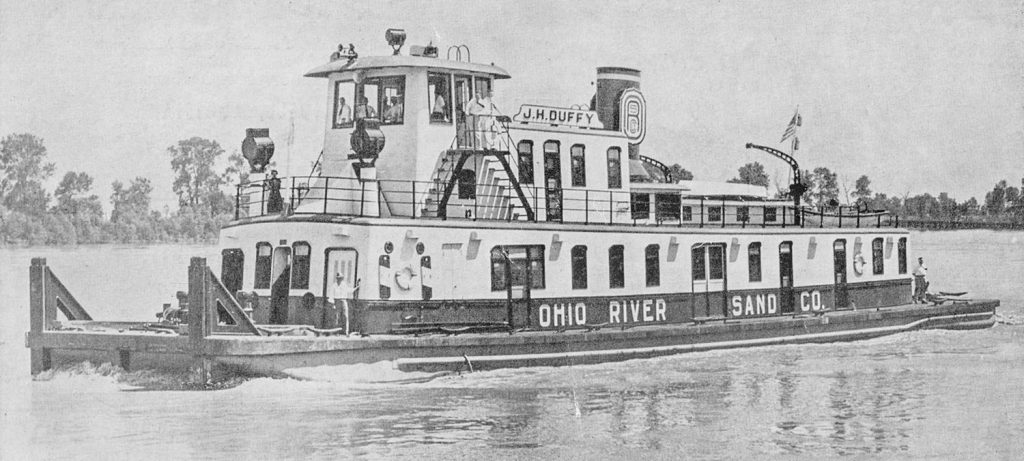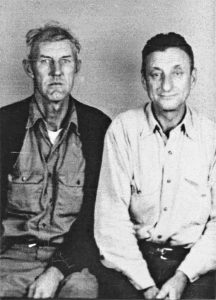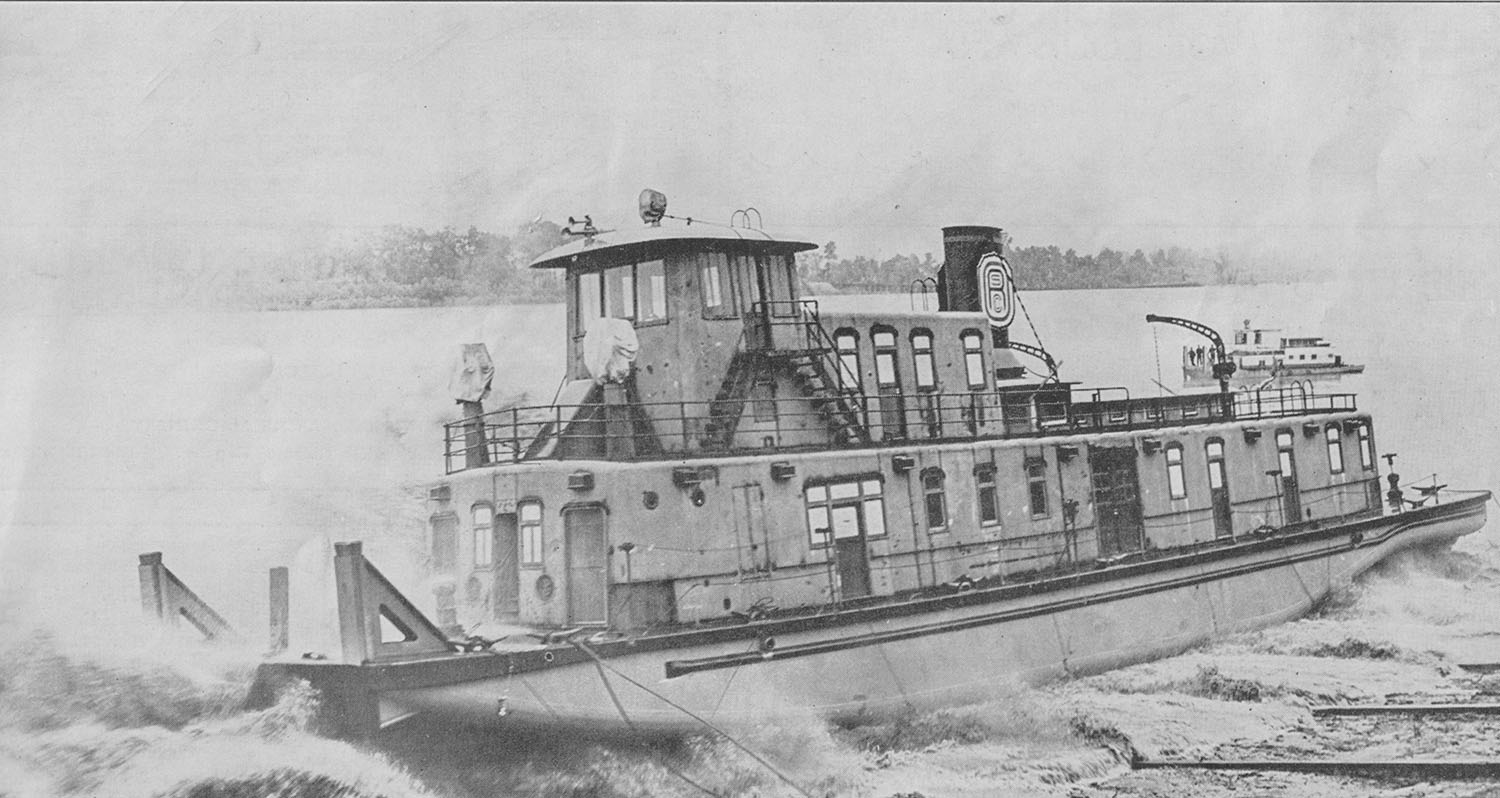In the July 17 column regarding the Str. Transporter, mention was made of J. Mack Gamble’s Annual Review column that had appeared in the December 31, 1938, issue of The Waterways Journal. Gamble had lamented the demise of the big Transporter as having been the “end of an era.” He had also mentioned a new vessel that was launched in 1938, the “streamlined and air-conditioned” J.H. Duffy, further calling it a “modern trend” in towboat construction. The Duffy was as futuristic as most rivermen could imagine at that time.
The 1930s, while still the midst of the Great Depression, were an innovative time for river transportation. Great strides had been made in diesel power and tunnel-stern, prop-driven towboats. St. Louis Shipbuilding & Steel Company had been building smaller diesel prop towboats since 1933 under the leadership of Herman Pott. The J.H. Duffy would prove to be the first of many uniquely designed boats built by that firm.
St. Louis Ship had built the Senator Combs for Ashland Oil & Refining Company in 1936, and the Duffy, constructed for the Ohio River Sand Company of Louisville, Ky., would be the largest boat built by them since then. The boat was hailed as being “all welded – all steel” in a full-page front cover ad for St. Louis in the June 4, 1938, WJ that included a photo of the Duffy launch. The hull was 130 feet by 30 feet, and power was supplied by a pair of Busch-Sulzer six-cylinder diesels with a total of 900 hp. (Curiously, the boat was listed in the Inland River Record with this 900 hp. through 1950, and then was shown as 800 hp. until the 1965 edition, where it was then shown with 1,300 hp. No repowering or engine upgrade was mentioned.)
The boat had been designed by R.N. Coolidge, of Nashville, Tenn. The vessel was indeed very streamlined compared with the traditional boxy styles of boats built in that era and boasted of providing air-conditioned comfort for the crew.
The launch was detailed in an article in the June 4, 1938, WJ, which uncharacteristically failed to give the exact date of the event. Miss Caroline Rankin, 12-year-old granddaughter of J.M. Settle, president of Ohio River Sand, served as the vessel sponsor. The christening was attended by a large group that included such people as Capt. James Hamilton Duffy, for whom the boat was named; Donald T. Wright and Andrew Franz of The Waterways Journal, J.W. Ritchie of the American Bureau of Shipping, several representing the Busch-Sulzer Bros. Diesel Engine Company and three representatives of the Socony-Vacuum Oil Corporation (which would soon have a large diesel boat built for them by St. Louis Ship).

The J.H. Duffy would be a fixture in the Louisville area for many years to come. Particularly in the first years of operation, Ohio River Sand often had it out working for other companies. According to details in a lawsuit that Ohio River Sand filed in 1945 against the U.S. government seeking reimbursement of tax erroneously assessed, the boat was on fully found charter to Standard Oil of Ohio (Sohio) in December 1942 and January 1943. This service had Ohio River Sand paying all crew and fuel expense, and the charter rate to Sohio was $365 per day.
In 1971, the fleet of Ohio River Sand was absorbed by Martin Marietta, Concrete Materials Division, Louisville. The following year, the J.H. Duffy was sold to Capt. John Beatty of Cincinnati. Beatty, a noted equipment salvor, was establishing a landing at Warsaw, Ky., near Mile 529 Ohio River, and this writer last remembers seeing the Duffy there. I don’t recall that he ever operated the boat. It was last listed in the 1976 edition of the IRR. The final disposition of the boat is not known.

The J.H. Duffy caused a great stir in 1938 for the aerodynamic design of the superstructure, but at least two large steam sternwheel steamboats would be built after the Duffy. St. Louis Ship would go on to produce some towboats that were equally unique in design, but the Duffy was the vanguard.
Richard Dale James, former towboat deckhand turned lawyer, originally from the Gallipolis, Ohio, area but now residing in Wyandotte, Okla., contacted me after reading the Transporter column. His great uncle, Walter “Doc” James, was aboard the Transporter when it was upset at Joppa, Ill., on May 9, 1927. He was kind enough to send a photo of Walter with a neighbor and co-worker, Palmer Fisher, when they were both working for Union Barge Line during World War II. Richard decked on boats for G&C Towing and M/G Transport during summers while attending Ohio University.
Caption for top photo: Launching as pictured in a St. Louis Ship ad in the June 4, 1938, WJ. (David Smith collection)
Capt. David Smith can be contacted at davidsmith1955obc@gmail.com.



